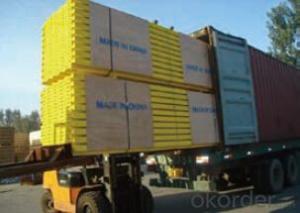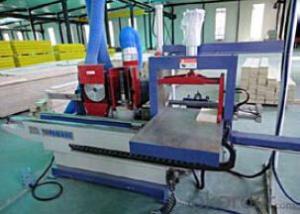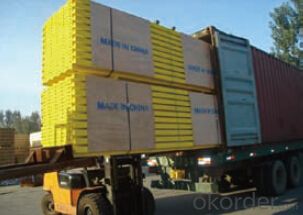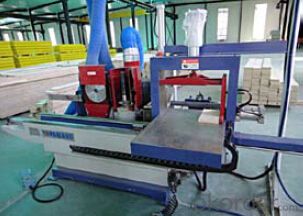Timber Beam H-20 for formwork and scaffolding system
- Loading Port:
- Tianjin
- Payment Terms:
- TT OR LC
- Min Order Qty:
- 50 m²
- Supply Capability:
- 1000 m²/month
OKorder Service Pledge
OKorder Financial Service
You Might Also Like
Characteristics:
◆ Standardized production lines.
Supply capability: 3000m/day, Lmax = 6600mm.
◆ Finger jointing of the flange and web, the strength of timber beam is highly improved.
Max. shearing force failure load:40KN
◆ Well treated to prevent from water penetration or erosion, so the service life maximally extended.
Normally, CNBM timber beam H20 can be used for 4 to 5 years, the exact using time would depend on maintenance & storage.
◆ Robust caps at the end of the girders protect against damages.
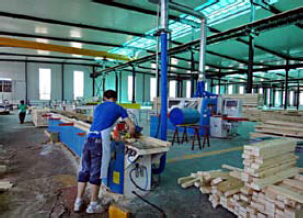
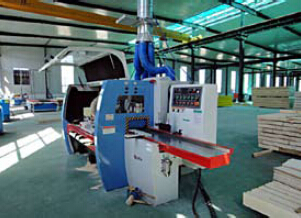
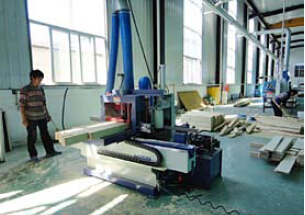
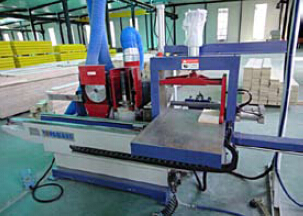
- Q: What are the common design considerations for steel formwork in high-rise construction?
- High-rise construction necessitates careful evaluation of several design considerations for steel formwork. First and foremost, it is crucial to assess the load-bearing capacity of the formwork. Heavy loads, including concrete weight, equipment, and workers, are common in high-rise constructions. Thus, the steel formwork must be designed to withstand these loads and prioritize construction safety. Durability and longevity are also key factors to consider. High-rise construction projects often span months or even years, necessitating formwork that can endure prolonged use and exposure to diverse weather conditions. Steel formwork is preferred for its strength and resistance to wear and tear. Additionally, the formwork design should prioritize ease of assembly and disassembly. Frequent repositioning of the formwork during the building process is common in high-rise construction projects. Consequently, the formwork system should enable efficient and swift assembly and disassembly, minimizing downtime and boosting productivity. Flexibility and adaptability are crucial in the formwork design for high-rise construction. The formwork must be capable of accommodating various shapes and sizes of concrete elements, such as columns, walls, and slabs. This necessitates a well-designed formwork system that can be easily adjusted and modified to meet specific requirements in each construction phase. Safety is of paramount importance in high-rise construction. The formwork design should incorporate appropriate safety features, such as handrails, guardrails, and non-slip surfaces, to prevent accidents and ensure worker well-being. Lastly, cost-effectiveness is a significant consideration. High-rise construction projects can be financially demanding, and the formwork design should aim to minimize material and labor costs without compromising quality and safety. In conclusion, the design considerations for steel formwork in high-rise construction encompass load-bearing capacity, durability, ease of assembly and disassembly, flexibility, safety, and cost-effectiveness. By addressing these factors, engineers and designers can ensure successful and efficient execution of high-rise construction projects.
- Q: How is steel formwork disassembled?
- Steel formwork is typically disassembled by removing the formwork components in a systematic manner. This involves loosening and removing the fasteners, such as bolts and clamps, that hold the formwork together. Once the fasteners are removed, the individual formwork panels or sections can be lifted or dismantled and taken apart. Careful handling and proper storage of the disassembled steel formwork components is necessary to ensure their longevity and future use.
- Q: How does steel formwork handle concrete shrinkage cracking?
- Steel formwork is specifically designed to handle concrete shrinkage cracking. Concrete shrinkage cracking occurs due to the natural process of concrete drying and shrinking as it cures. The use of steel formwork helps to minimize and control these cracks. Steel formwork provides strong and rigid support to the concrete during the curing process. It holds the concrete in place and prevents it from moving or shifting as it shrinks. This restricts the development of large and uncontrolled cracks. Additionally, steel formwork is able to withstand the high pressure exerted by the concrete during curing. This ensures that the formwork remains intact and does not deform or break under the pressure, which could lead to cracks in the concrete. Moreover, steel formwork allows for the use of expansion joints. These joints are strategically placed in the formwork to accommodate the anticipated shrinkage of the concrete. The expansion joints provide controlled spaces for the concrete to shrink into, minimizing the formation of random cracks. Furthermore, steel formwork can be easily inspected for any cracks that may have occurred during the curing process. This allows for early detection and repair of any potential issues, preventing further cracking or damage to the concrete structure. In summary, steel formwork effectively handles concrete shrinkage cracking by providing strong support, resisting pressure, accommodating shrinkage through expansion joints, and allowing for easy inspection and repair.
- Q: Are there any limitations to using steel formwork?
- Yes, there are limitations to using steel formwork. Some of the limitations include the high initial cost of steel formwork compared to other materials, the requirement for skilled labor to assemble and dismantle the formwork, and the need for proper maintenance to prevent corrosion. Additionally, steel formwork is heavy and may require heavy machinery for transportation and installation, making it less suitable for small-scale projects.
- Q: What are the different types of reinforcements used in steel formwork?
- There are several types of reinforcements used in steel formwork, each with their own unique characteristics and benefits. 1. Steel bars: The most commonly used reinforcement in steel formwork is steel bars, also known as rebars. These bars are made of carbon steel and are available in various sizes and shapes. They provide strength and stability to the formwork structure, ensuring its ability to withstand the load and pressure during concrete pouring. 2. Steel mesh: Steel mesh is another type of reinforcement used in steel formwork. It consists of interconnected steel wires arranged in a grid pattern. Steel mesh provides added strength and prevents cracking or failure of the concrete due to shrinkage or temperature changes. It is commonly used in large-scale construction projects where large areas need to be reinforced. 3. Steel fibers: Steel fibers are small, discrete lengths of steel that are added to the concrete mix to enhance its structural properties. These fibers improve the tensile strength and ductility of the concrete, reducing the need for additional reinforcement. Steel fibers are especially beneficial in areas where heavy loads or dynamic forces are expected, such as industrial floors or pavements. 4. Steel plates: Steel plates are flat, rectangular sheets made of steel that are used to reinforce specific areas of the formwork. They are often used to reinforce corners, joints, or areas that require extra support. Steel plates are versatile and can be easily customized to fit the desired shape or size. 5. Steel beams: Steel beams are structural elements used to support the formwork and distribute the loads evenly. They provide stability and rigidity to the formwork structure, ensuring its integrity during the concrete pouring process. Steel beams are available in various shapes and sizes, including I-beams, H-beams, and U-beams, depending on the specific requirements of the project. Overall, the use of different types of reinforcements in steel formwork ensures the strength, durability, and stability of the structure. The choice of reinforcement depends on factors such as the load-bearing capacity, expected forces, and the specific requirements of the project.
- Q: Is steel formwork more environmentally friendly than other types of formwork?
- There are several reasons why steel formwork is considered to be a more environmentally friendly option than other types of formwork. Firstly, steel is an incredibly durable material that can be reused multiple times, reducing the need for constant production of new formwork materials. This helps to conserve natural resources and minimize waste. Furthermore, steel formwork has a longer lifespan compared to materials like timber or plywood, which often degrade over time and need frequent replacement. This longevity reduces the overall consumption of formwork materials and the associated environmental impact. In addition, steel formwork can be easily recycled at the end of its life, further reducing waste and minimizing the carbon footprint. The recycling process for steel is highly efficient and requires much less energy compared to the production of new steel. This results in significant energy savings and reduced greenhouse gas emissions. Moreover, steel formwork is resistant to moisture and other elements, eliminating the need for chemical treatments to protect it from decay or damage. This reduces the release of harmful substances into the environment, making steel formwork a safer and more sustainable option. However, it is important to consider that the environmental impact of steel formwork can also be influenced by factors such as the manufacturing processes used, transportation distances, and the specific requirements of a project. Therefore, it is crucial to assess the entire life cycle of the formwork and make well-informed decisions based on the specific circumstances to ensure the most environmentally friendly choice.
- Q: How does steel formwork prevent concrete segregation?
- Steel formwork helps prevent concrete segregation by providing a rigid and stable structure for the concrete to be poured into. Unlike other types of formwork materials such as wood or plastic, steel formwork maintains its shape and prevents any movement or deformation during the pouring and curing process. Concrete segregation occurs when the different components of concrete, such as cement, aggregates, and water, separate from each other, resulting in an uneven distribution of these components within the mixture. This can weaken the concrete structure and lead to various issues such as reduced strength, cracking, or voids. Steel formwork prevents concrete segregation by offering a smooth and even surface for the concrete to be poured onto. The rigid nature of steel ensures that there are no gaps or spaces for the components of the concrete to separate or settle unevenly. This helps to maintain a consistent and uniform distribution of the cement, aggregates, and water throughout the entire concrete mixture. Additionally, steel formwork provides a tight seal against the sides and bottom of the form, preventing any leakage or loss of moisture during the curing process. This helps in maintaining the required water-cement ratio, which is crucial for the proper hydration and hardening of the concrete. By preventing excessive evaporation or moisture loss, steel formwork ensures that the concrete cures evenly, reducing the chances of segregation. Furthermore, the use of steel formwork allows for precise and accurate placement of the concrete, eliminating any potential gaps or voids that could contribute to segregation. The steel formwork can be designed with various features such as tie rods, clamps, or connectors to hold the formwork panels securely in place, ensuring that the concrete is poured and compacted uniformly. In summary, steel formwork prevents concrete segregation by providing a stable and rigid structure that maintains the shape and integrity of the concrete mixture. It prevents the separation of components, ensures a consistent distribution of materials, and allows for precise and accurate placement of the concrete, resulting in a stronger and more durable structure.
- Q: How does steel formwork affect the overall safety of a construction project?
- Steel formwork can have a significant impact on the overall safety of a construction project. Firstly, steel formwork provides a strong and stable structure for concrete pouring, ensuring that the concrete is properly contained and supported during the curing process. This eliminates the risk of concrete collapse or deformation, which can be hazardous to workers and the overall stability of the structure. Additionally, steel formwork is known for its durability and load-bearing capacity. It can withstand heavy loads and pressures, reducing the chances of formwork failure or collapse. This enhances the safety of workers who might be working on or around the formwork, as they can have confidence in its stability. Moreover, steel formwork is designed with safety features such as handrails, walkways, and ladder access points, which facilitate safe and easy access for workers during construction activities. These features minimize the risk of falls and accidents, promoting a safer working environment. Furthermore, steel formwork allows for precise and accurate construction, resulting in a higher quality finished product. This reduces the likelihood of structural defects or weaknesses that could compromise the safety of the building. Steel formwork also provides a smooth and even surface, reducing tripping hazards and facilitating safer movement on the construction site. Lastly, steel formwork is reusable and can be easily dismantled and relocated, reducing waste and minimizing environmental impact. This not only contributes to sustainability but also reduces the risks associated with handling and disposing of traditional formwork materials. In conclusion, steel formwork positively impacts the overall safety of a construction project by providing a robust structure, ensuring stability, offering safety features, enabling precise construction, reducing waste, and promoting a safer working environment.
- Q: What are the different types of steel used for formwork construction?
- Formwork construction utilizes various steel types, each serving unique purposes. These steel types encompass: 1. Mild Steel: Predominantly employed in formwork construction, mild steel boasts affordability, strength, and durability. It suits most formwork applications, withstanding concrete pressure during pouring. 2. High-strength Steel: This steel variant surpasses mild steel in strength and toughness. Typically used when higher load-bearing capacity or additional reinforcement is necessary, high-strength steel offers enhanced structural integrity, albeit at a higher cost. 3. Structural Steel: Commonly employed in complex and larger formwork structures, structural steel showcases exceptional tensile strength and can endure heavy loads. It proves ideal for lengthy span requirements, such as bridge or high-rise building construction. 4. Reinforcing Steel: Rebar, another name for reinforcing steel, reinforces and strengthens concrete structures within formwork construction. Made from mild or high-strength steel, it is placed within the formwork prior to concrete pouring. Reinforcing steel mitigates cracking and bolsters overall formwork structural integrity. 5. Stainless Steel: In select scenarios, stainless steel may be utilized in formwork construction, particularly when corrosion resistance becomes paramount. Its resistance to rust and corrosion deems it suitable for marine or coastal construction projects. However, stainless steel incurs greater expenses compared to other steel types and may not be necessary for all formwork applications. To summarize, formwork construction encompasses several steel types, including mild steel, high-strength steel, structural steel, reinforcing steel, and stainless steel. The choice relies on factors such as load-bearing capacity, structural requirements, and environmental conditions.
- Q: How does steel formwork affect the schedule of a construction project?
- Steel formwork can have a positive impact on the schedule of a construction project. Compared to traditional formwork methods, steel formwork is quicker to set up and dismantle, reducing the time required for formwork installation and removal. This efficiency allows for faster construction progress, enabling the project to stay on schedule or even be completed ahead of time. Additionally, steel formwork is highly durable and can be reused multiple times, further saving time by eliminating the need for constant formwork replacement.
Send your message to us
Timber Beam H-20 for formwork and scaffolding system
- Loading Port:
- Tianjin
- Payment Terms:
- TT OR LC
- Min Order Qty:
- 50 m²
- Supply Capability:
- 1000 m²/month
OKorder Service Pledge
OKorder Financial Service
Similar products
Hot products
Hot Searches
Related keywords
